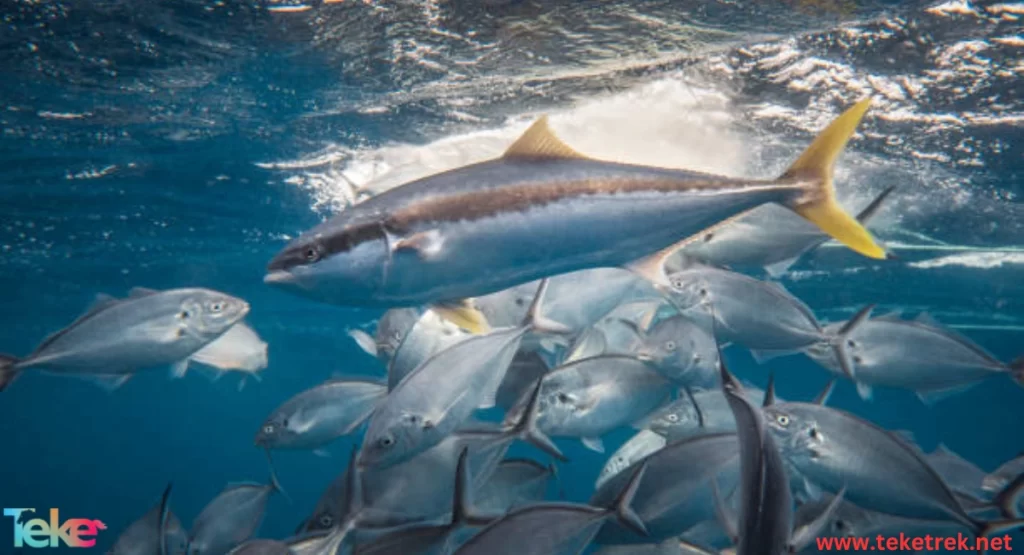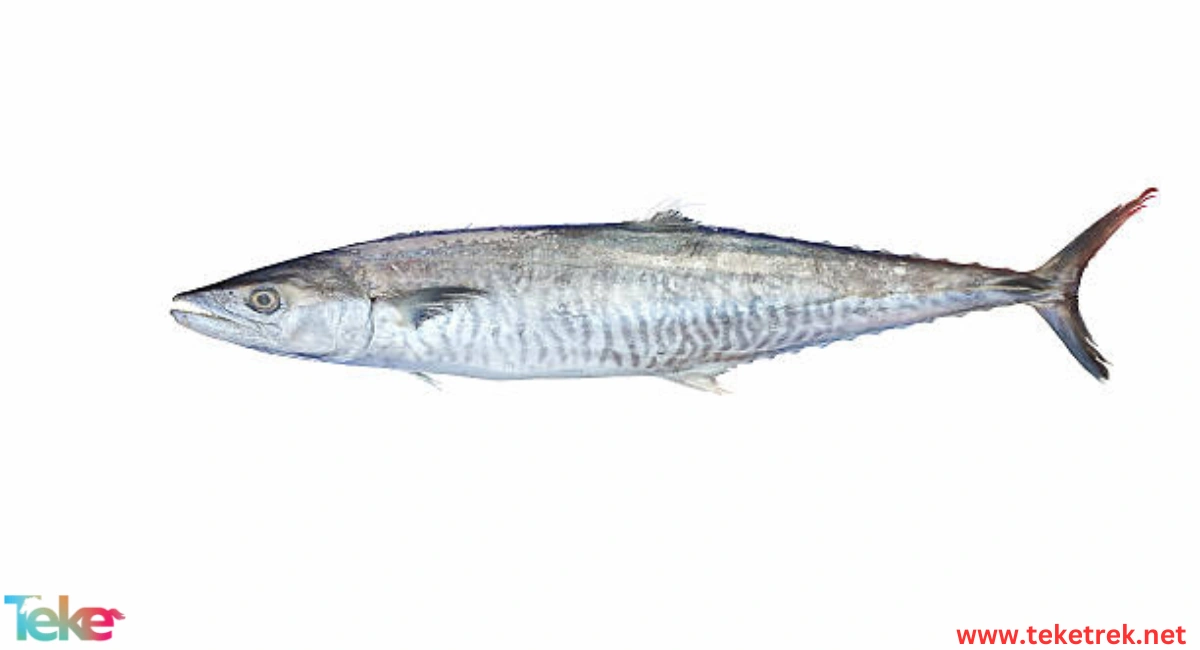It also known as the King mackerel, the Spanish mackerel scientific name is Scomberomorus cavalla. It is part of the ray-finned fish family.
Let’s learn more about it from teketrek.
Facts about The Narrow-barred Spanish mackerel
The Narrow-barred Spanish mackerel is widely found in warm waters and is highly popular among fishermen due to its striking appearance and excellent taste.
This fish is known for being very fast and strong; moving in the depths with agility likes a tiger, as described by divers.
The Narrow-barred Spanish mackerel is a predatory animal when hungry, ready to attack prey at any time.
It undergoes wide-ranging migrations, traveling long distances in search of food or during the breeding season.

What are the characteristics of a narrow-barred Spanish mackerel?
The size: The Narrow-barred Spanish mackerel can grow up to a large size ranging from about 1 to 1.5 meters.
The body: It has a rectangular-shaped body with pointed heads that enable it to move and swim quickly in the water.
The color: The Narrow-barred Spanish mackerel is characterized by its blue-green color with silver sides, while its belly and lower side of the body are white. It also has vertical lines or spots on the sides of its body.
The Fins: The fish has two dorsal fins, along with a series of small fins located behind the dorsal and anal fins. The fins of the Narrow-barred Spanish mackerel have spines, with the first dorsal fin having 9-10 spines and the second dorsal fin consisting of 4-5 soft spines.
The teeth: It possesses sharp teeth that allow it to catch and tear its prey easily.
The tail: The tail area of king mackerel is characterized by being divided into two parts or bifurcated rather than one piece.
Information about sea snakes, their characteristics, and features
Where can you find the Narrow-barred Spanish mackerel?
The Narrow-barred Spanish mackerel is found in coastal areas extending up to a depth of 180 meters. It is abundant in the coastal waters of the Arabian Sea, the Arabian Gulf, the Indian Ocean, and the Gulf of Oman.
Food of the Narrow-barred Spanish mackerel
The Narrow-barred Spanish mackerel is a carnivorous animal, feeding on small fish such as sardines, anchovies, as well as shrimp, crustaceans, and squid.
It is worth mentioning that its feeding period is during the day, and it is very rare for it to feed at night.
The Narrow-barred Spanish mackerel uses its speed, agility, and strong teeth to chase and catch prey.
Reproduction stages of the Narrow-barred Spanish mackerel
The Narrow-barred Spanish mackerel reproduces by laying eggs, but through external fertilization outside the female’s body.
The female releases her eggs into the water, while the males release their sperm into the same aquatic environment, allowing fertilization to occur in the water.
Narrow-barred Spanish mackerels reproduce, with their mating season starting in spring and summer, where they lay eggs in these two seasons.
After fertilization, the eggs hatch and tiny larvae emerge, drifting with ocean currents until settling in waters near the shore.
The Youngs grow rapidly and become large fish capable of reproducing within a few years, depending on the species.
Characteristics and features of Hariri fish and interesting facts about them.
What are the benefits of Narrow-barred Spanish mackerel?
– Improves heart and cardiovascular health in adults and children.
The risk of age retreating is decreases.
The risk of anemia and diabetes decreases.
– Contains low-fat proteins that aid in weight management.
-It contains no carbohydrates, fiber, or sugar.
– Contains a significant amount of protein that helps in satiety and prevents overeating, keeping you within your daily calorie limits.
– Strengthens bones due to its content of selenium, magnesium, calcium, and iron.
– It reduce signs of aging for example: wrinkles and age spots.

FAQs about Spanish mackerel
- What is a narrow based Spanish mackerel?
The narrow-barred Spanish mackerel is a large neritic predatory fish targeted by several thousand artisanal boats across eight jurisdictions in the Arabian Gulf, Gulf of Oman, and Arabian Sea. - Is it OK to eat king mackerel?
If you want to include mackerel in your diet, choose types with low mercury content, such as North Atlantic mackerel. Avoid king mackerel and Spanish mackerel due to their high mercury levels, which pose a risk of mercury poisoning.
- What are the side effects of king mackerel?
King mackerel contains high levels of mercury, which can be harmful in large amounts and may lead to mercury poisoning. Spanish mackerel can also have elevated mercury levels and should be consumed in moderation, particularly by pregnant or nursing women.
- Are king mackerels aggressive?
King mackerel are aggressive, hard-hitting predators known for feeding on other fish.
- What is the common name for Scomberomorus?
Spanish mackerels is the Scomberomorus common name.
In conclusion, it is important to highlight the significance of this type of fish in achieving ecological balance.
It is considered a fish of great importance and benefit due to its many vitamins and minerals that provide the b ody with necessary energy.
References
Wikipedia





